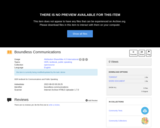
OER textbook for Communications and Public Speaking
- Subject:
- Business and Communication
- Communication
- English Language Arts
- Speaking and Listening
- Material Type:
- Full Course
- Date Added:
- 08/02/2022

OER textbook for Communications and Public Speaking
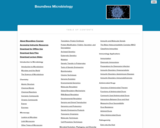
Microbiology is a broad term which includes virology, mycology, parasitology, bacteriology, immunology, and other branches. A microbiologist is a specialist in microbiology and these related topics. Microbiological procedures usually must be aseptic and use a variety of tools such as light microscopes with a combination of stains and dyes. As microbes are absolutely required for most facets of human life.

American Politics
The Constitution and the Founding of America
Federalism
Civil Liberties
Civil Rights
Public Opinion
Interest Groups
Campaigns and Elections
Political Participation and Voting
The Media
Congress
The Presidency
Bureaucracy
The Judiciary
Domestic Policy
Economic Policy
Social Policy
Foreign Policy
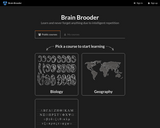
The full OpenStax Biology course, together with digital exercises that are repeated in an efficient way to help you achieve lifelong mastery in the subject material.

An advanced course covering anatomical, physiological, behavioral, and computational studies of the central nervous system relevant to speech and hearing. Students learn primarily by discussions of scientific papers on topics of current interest. Recent topics include cell types and neural circuits in the auditory brainstem, organization and processing in the auditory cortex, auditory reflexes and descending systems, functional imaging of the human auditory system, quantitative methods for relating neural responses to behavior, speech motor control, cortical representation of language, and auditory learning in songbirds.

This course provides an outline of vertebrate functional neuroanatomy, aided by studies of comparative neuroanatomy and evolution, and by studies of brain development. Topics include early steps to a central nervous system, basic patterns of brain and spinal cord connections, regional development and differentiation, regeneration, motor and sensory pathways and structures, systems underlying motivations, innate action patterns, formation of habits, and various cognitive functions. In addition, lab techniques are reviewed and students perform brain dissections.

This is a seminar series led by graduate students and postdocs in the MIT Department of Brain and Cognitive Sciences (BCS) from 2015 to the present, featuring tutorials on computational topics relevant to research on intelligence in neuroscience, cognitive science, and artificial intelligence. These tutorials are aimed at participants who have some computational background but are not experts on these topics.
A computational tutorial can consist of any method, tool, or model that is broadly relevant within neuroscience, cognitive science, and artificial intelligence. The goal is to bring researchers in brain and cognitive sciences closer to the researchers creating computational methods.
Resources posted here include lecture videos, lecture slides, code and datasets for exercises, background references, and other supplementary material. Typically, each tutorial consists of a short lecture, and an interactive part with tutorials or “office hours” to work through practice problems and discuss how the material may be applied to participants’ research.
This series was organized by Emily Mackevicius, Jenelle Feather, Nhat Le, Fernanda De La Torre Romo, and Greta Tuckute, with financial support from BCS. Videos were filmed, edited, and produced by Kris Brewer, Director of Technology at the Center for Brains, Minds, and Machines (CBMM).

Survey of principles underlying the structure and function of the nervous system, integrating molecular, cellular, and systems approaches. Topics: development of the nervous system and its connections, cell biology or neurons, neurotransmitters and synaptic transmission, sensory systems of the brain, the neuro-endocrine system, the motor system, higher cortical functions, behavioral and cellular analyses of learning and memory. First half of an intensive two-term survey of brain and behavioral studies for first-year graduate students.

This course is the second half of the intensive survey of brain and behavioral studies for first-year graduate students in the Brain and Cognitive Sciences curriculum. Each module of this core course involves a series of overview lectures by leading researchers in the field. By offering a thorough introduction to the current state of the discipline while emphasizing critical thinking, the course aims to prepare students as cognitive scientists.
Topics include: perception, attention, working memory, recognition and recall, language, and other issues in cognitive science. Topics are covered from the neural, behavioral and computational perspectives.

This class is the second half of an intensive survey of cognitive science for first-year graduate students. Topics include visual perception, language, memory, cognitive architecture, learning, reasoning, decision-making, and cognitive development. Topics covered are from behavioral, computational, and neural perspectives.

This course explores the problem of intelligence—its nature, how it is produced by the brain and how it could be replicated in machines—using an approach that integrates cognitive science, which studies the mind; neuroscience, which studies the brain; and computer science and artificial intelligence, which study the computations needed to develop intelligent machines. Materials are drawn from the Brains, Minds and Machines Summer Course offered annually at the Marine Biological Laboratory in Woods Hole, MA, taught by faculty affiliated with the Center for Brains, Minds and Machines headquartered at MIT. Elements of the summer course are integrated into the MIT course, 9.523 Aspects of a Computational Theory of Intelligence.
Contributors
This course includes the contributions of many instructors, guest speakers, and a team of iCub researchers. See the complete list of contributors.

Utopia or dystopia? It’s up to us.
In the 21st century, powerful technologies have been appearing at a breathtaking pace—related to the internet, artificial intelligence, genetic engineering, and more. They have amazing potential upsides, but we can’t ignore the serious risks that come with them.
Brave New Planet is a podcast that delves deep into the most exciting and challenging scientific frontiers, helping us understand them and grapple with their implications. Dr. Eric Lander, president and founding director of the Broad Institute of MIT and Harvard, is a geneticist, molecular biologist, and mathematician who was a leader of the Human Genome Project and for eight years served as a science advisor to the White House for President Obama. He’s also the host of Brave New Planet, and he’s talked to leading researchers, journalists, doctors, policy makers, activists, and legal experts to illuminate how this generation’s choices will shape the future as never before.
Brave New Planet is a partnership between the Broad Institute, Pushkin Industries, and the Boston Globe.
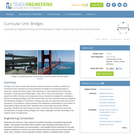
Through a five-lesson series that includes numerous hands-on activities, students are introduced to the importance and pervasiveness of bridges for connecting people to resources, places and other people, with references to many historical and current-day examples. In learning about bridge types arch, beam, truss and suspension students explore the effect of tensile and compressive forces. Students investigate the calculations that go into designing bridges; they learn about loads and cross-sectional areas by designing and testing the strength of model piers. Geology and soils are explored as they discover the importance of foundations, bearing pressure and settlement considerations in the creation of dependable bridges and structures. Students learn about brittle and ductile material properties. Students also learn about the many cost factors that comprise the economic considerations of bridge building. Bridges are unique challenges that take advantage of the creative nature of engineering.

This course provides knowledge and skills in supporting STEM (Science, Technology, Engineering and Math) infusion throughout Out-of-School (OST) environments. Educators learn to support STEM skill development through active, engaging, and fun approaches to each topic, while aligning to the MA-CF and engaging best practices such as ULD and TC/PBL.

Most researchers know that data management is essential for getting the most out of your data. But what exactly is it and how do you ensure that you’re managing your data well? This course, focused around a series of webinars, introduces key concepts in data management and how to apply them in your research.
By the end of the course you will be able to:
Describe the data management cycle
Discuss benefits and challenges of data sharing
Explain what happens to data after it is shared
Identify appropriate data repositories and their submission requirements
Describe how ontologies and standards are used to annotate biological data
Identify appropriate resources and tools for data management
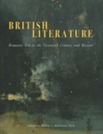
The University of North Georgia Press and Affordable Learning Georgia bring you British Literature II: Romantic Era to the Twentieth Century and Beyond.
Featuring 37 authors and full texts of their works, the selections in this open anthology represent the literature developed within and developing through their respective eras. This completely-open anthology will connect students to the conversation of literature that has captivated readers in the past and still holds us now.
Features:
Contextualizing introductions to the Romantic era; the Victorian era; and the Twentieth Century and beyond.
Over 90 historical images.
In-depth biographies of each author.
Instructional Design features, including Reading and Review Questions.
This textbook is an Open Educational Resource. It can be reused, remixed, and reedited freely without seeking permission.

There are several hundred thousand Brownfield sites across the country. The large number of sites, combined with how a majority of these properties are located in urban and historically underserved communities, dictate that redevelopment of these sites stands to be a common theme in urban planning for the foreseeable future. Students form a grounded understanding of the Brownfield lifecycle: how and why they were created, their potential role in community revitalization, and the general processes governing their redevelopment. Using case studies and guest speakers from the public, private and non-profit sectors, students develop and hone skills to effectively address the problems posed by these inactive sites.
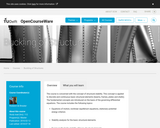
The course is concerned with the concept of structural stability. This concept is applied to discrete and continuous basic structural elements (beams, frames, plates and shells). The fundamental concepts are introduced on the basis of the governing differential equations. The course includes the following topics:
*Equations of motion, nonlinear equilibrium equations, stationary potential energy criterion.
*Stability analysis for the basic structural elements.
*Design methods for stability of basic structural elements.
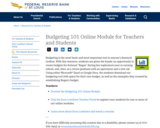
Budgeting is the most basic and most important tool in anyone's financial toolbox. With this resource, students are given the hands-on opportunity to create budgets for fictional "Regan" during her sophomore year in nursing school, and, later, as a recent graduate with an apartment and a new car. Using either Microsoft® Excel or Google Docs, the students download our budgeting tool with space for their own budget, as well as the examples they created by establishing Regan's budget.
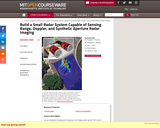
Are you interested in building and testing your own imaging radar system? MIT Lincoln Laboratory offers this 3-week course in the design, fabrication, and test of a laptop-based radar sensor capable of measuring Doppler, range, and forming synthetic aperture radar (SAR) images. You do not have to be a radar engineer but it helps if you are interested in any of the following; electronics, amateur radio, physics, or electromagnetics. It is recommended that you have some familiarity with MATLAB®. Teams of three students will receive a radar kit and will attend a total of 5 sessions spanning topics from the fundamentals of radar to SAR imaging. Experiments will be performed each week as the radar kit is implemented. You will bring your radar kit into the field and perform additional experiments such as measuring the speed of passing cars or plotting the range of moving targets. A final SAR imaging contest will test your ability to form a SAR image of a target scene of your choice from around campus; the most detailed and most creative image wins.
Acknowledgement and Disclaimer
This work is sponsored by the Department of the Air Force under Air Force Contract #FA8721-05-C-0002. Opinions, interpretations, conclusions and recommendations are those of the authors and are not necessarily endorsed by the United States Government.